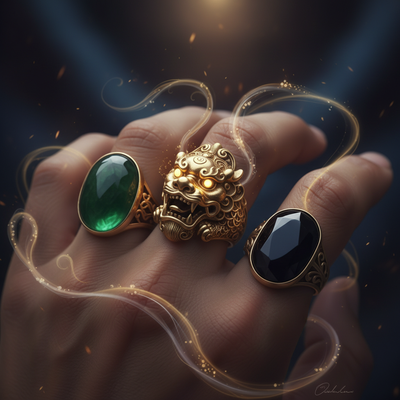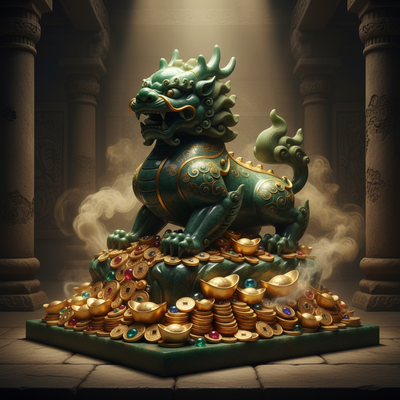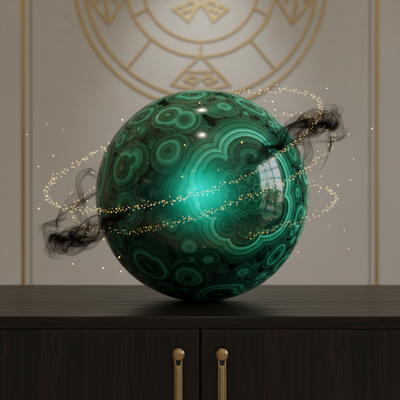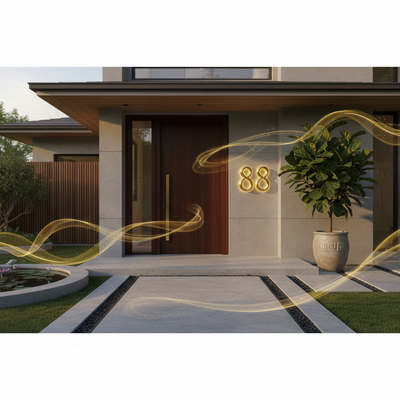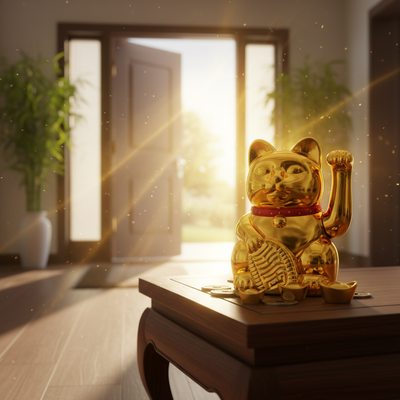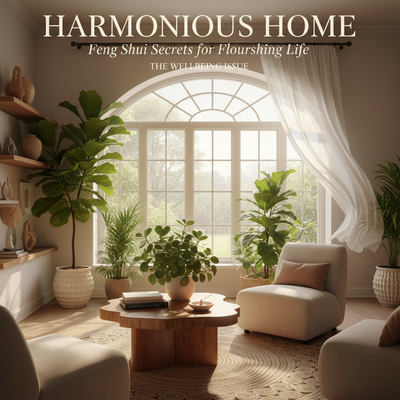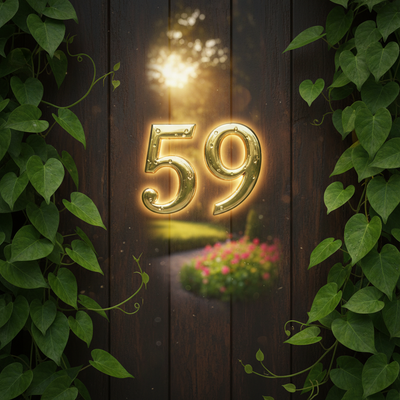Your car is more than just a way to get around; it's your personal space that takes you through your daily life. It's where you think, listen to music, and move between different parts of your day. This makes many people wonder: "Does my car color matter in feng shui?"
The answer is yes. In feng shui practice, your car's color can greatly affect your energy, how safe you feel while driving, and your overall well-being. The color of this metal shell you travel in connects with your personal energy field, or Qi, every time you sit behind the wheel.
This guide will be your roadmap. We will walk you through a clear, step-by-step process to find the best feng shui car color for you. This isn't about superstition; it's about using ancient energy principles to create a more peaceful, supportive, and safe driving experience.
More Than Just Looking Good
Choosing a car color based on feng shui isn't a random decision. It's based on a logical, time-tested system that explains how energy, or Qi, works. Understanding these basic principles is the first step toward making a thoughtful and powerful choice for your vehicle.
Your Personal Energy Bubble
Think of your car as a moving, personal energy bubble. This metal container holds your Qi as you move through the world. The outside color of this bubble acts like a filter, affecting the quality of energy both inside and around you. Just like wearing a certain color of clothing can make you feel more confident and powerful, your car's color can either work well with your personal energy or create a subtle, ongoing sense of conflict. The goal is to choose a color that acts like a helpful shield, not one that drains your energy.
The Five Elements
The main idea that controls this whole process is the Five Elements theory, or Wu Xing. This ancient system says that everything in the universe, including people, seasons, directions, and colors, is made up of five main energy types:
- Wood (木)
- Fire (火)
- Earth (土)
- Metal (金)
- Water (水)
These elements aren't still; they interact with each other in ongoing cycles. For choosing a car color, we focus on two main cycles.
The Productive Cycle
The Productive Cycle, also called the Sheng Cycle, describes how one element creates or feeds the next. This cycle represents support, growth, and harmony. It's the foundation for picking the most lucky and supportive colors.
- Water feeds Wood (water helps trees grow).
- Wood fuels Fire (wood feeds a fire).
- Fire creates Earth (ash from a fire becomes earth).
- Earth produces Metal (metal is mined from the earth).
- Metal creates Water (metal can collect water from the air).
The Destructive Cycle
The Destructive Cycle, or Ke Cycle, describes how one element overcomes or controls another. This cycle represents conflict and draining. Understanding this cycle helps us identify which colors to avoid, as they can create energy friction and drain your personal Qi.
- Water puts out Fire.
- Fire melts Metal.
- Metal cuts Wood.
- Wood breaks up Earth (tree roots).
- Earth blocks Water.
By understanding your personal element and how it relates to these cycles, you can smartly choose a car color that supports you and avoid one that works against you.
Step 1: Your Birth Element
The foundation of this whole process is identifying your personal feng shui birth element. This moves us from theory to practical self-discovery. Once you know your element, you have the key to unlock your personalized color recommendations.
Birth Year Determines Element
In traditional feng shui, one of the most direct and widely used methods for finding a person's main element is through their year of birth. Specifically, we look at the last digit of the year you were born. This method provides a strong and effective foundation for applications like choosing a car color, as it relates to the overall energy of your time of birth.
Find Your Element Chart
To find your personal element, simply locate the last digit of your birth year in the table below.
| If the Last Digit of Your Birth Year is... | Your Personal Element is... |
|---|---|
| 0 or 1 | Metal (金) |
| 2 or 3 | Water (水) |
| 4 or 5 | Wood (木) |
| 6 or 7 | Fire (火) |
| 8 or 9 | Earth (土) |
An important note for accuracy: The feng shui year doesn't begin on January 1st. It begins on the Chinese New Year, which usually falls in late January or early February. If your birthday is in this period, we suggest you look up the specific date of the Chinese New Year for your birth year. If you were born before that date, your feng shui birth year is the previous year, and you should use the last digit of that year instead. This expert detail ensures you identify your correct element.
Step 2: Match Element to Color
Now that you've identified your personal birth element, you can find the perfect car color. This section provides a direct, personalized, and easy-to-understand range of choices. This is the main payoff, where theory translates into your ideal car.
Three Color Categories
To provide detailed and practical advice, we classify colors into three different relationships with your personal element. This framework helps you understand why certain colors are recommended over others.
- Nourishing Colors (Most Recommended): These are colors connected with the element that produces yours in the Productive Cycle. Choosing a color from this category gives you constant support, energy, and nourishment, promoting safety and good fortune.
- Harmonizing Colors (Good Choice): These are colors that match your own personal element. These colors create a sense of balance, stability, and self-confidence. They strengthen your natural strengths and help you feel grounded and centered.
- Draining/Clashing Colors (To Avoid): These are colors from the elements that drain or destroy your personal element according to the cycles. A draining color is the one your element produces, while a clashing color is the one that destroys your element. Driving in these colors can create energy conflict, leading to stress, tiredness, and a feeling of being unsupported.
Your Personalized Color Palette
Below are the detailed color recommendations for each of the five personal elements. We use descriptive language to help you visualize the shades and tones.
For the Wood Element Person
As a Wood person, you are connected with growth, flexibility, and vitality.
- Best (Nourishing) Colors - Water Element: Choose colors that represent the element that feeds you. This includes deep blues, flowing blacks, and dark, charcoal grays. These colors provide the energetic "water" for your personal "wood" to thrive.
- Good (Harmonizing) Colors - Wood Element: All shades of green and natural browns work well with your own energy. From bright lime to deep forest green and rich wood tones, these colors enhance your natural stability and potential for growth.
- Colors to Avoid - Metal and Fire Elements: Avoid the colors of the elements that cut or burn you. This means staying away from bright whites, silvers, golds, and most metallic finishes (Metal). Also, avoid bright reds, purples, and strong oranges (Fire), as they can drain your energy.
For the Fire Element Person
As a Fire person, your energy is about passion, visibility, and transformation.
- Best (Nourishing) Colors - Wood Element: The element that fuels you is Wood. Therefore, your most supportive colors are all shades of green and brown. These colors provide a steady source of fuel for your inner fire, preventing burnout and promoting sustained energy.
- Good (Harmonizing) Colors - Fire Element: Connect with your own fiery nature by choosing reds, deep oranges, purples, and pinks. These colors amplify your natural charisma and drive, helping you feel seen and powerful. Use them consciously, as too much fire can be overwhelming.
- Colors to Avoid - Water and Earth Elements: Avoid the colors of the elements that put out or exhaust you. This includes all shades of blue and black (Water). You should also be careful with too many earthy tones like yellow, beige, and sandy brown (Earth), as Fire produces Earth, which can slowly drain your energy.
For the Earth Element Person
As an Earth person, you represent stability, nurturing, and practicality.
- Best (Nourishing) Colors - Fire Element: The element that creates you is Fire (ash becomes earth). Your most supportive colors are reds, oranges, and purples. These vibrant shades bring energy, warmth, and recognition to your grounded nature.
- Good (Harmonizing) Colors - Earth Element: Strengthen your natural stability with colors that match your element. This includes all shades of yellow, beige, sand, taupe, and rich browns. These colors help you feel secure, balanced, and reliable.
- Colors to Avoid - Wood and Metal Elements: Avoid colors of the elements that break up or drain you. This means staying away from greens (Wood), as well as whites, silvers, golds, and metallic finishes (Metal), which represent the element that Earth produces and thus drains its strength.
For the Metal Element Person
As a Metal person, you are connected with precision, clarity, and strength.
- Best (Nourishing) Colors - Earth Element: You are produced by the Earth, so your most supportive colors are earthy tones. This includes yellows, beiges, sandy browns, and taupe. These colors provide a solid, nurturing foundation for your strength and structure.
- Good (Harmonizing) Colors - Metal Element: Enhance your natural qualities with colors from your own element. This includes bright whites, silvers, grays, golds, and metallic finishes. These colors amplify your sense of focus, efficiency, and purity.
- Colors to Avoid - Fire and Water Elements: Avoid colors of the elements that melt or rust you. Stay away from reds, purples, and bright oranges (Fire). You should also be mindful of blues and blacks (Water), as Metal produces Water, which can slowly drain your energy over time.
For the Water Element Person
As a Water person, you are connected to flow, wisdom, and communication.
- Best (Nourishing) Colors - Metal Element: The element that creates you is Metal (it helps collect water). Your best colors are therefore white, silver, gray, and gold. These colors bring structure, clarity, and strength to your flowing nature.
- Good (Harmonizing) Colors - Water Element: Connect with your own element by choosing deep blues, blacks, and dark grays. These colors enhance your intuition, depth, and ability to navigate challenges with ease.
- Colors to Avoid - Earth and Wood Elements: Avoid the colors of the elements that block or drain you. This means yellows, beiges, and browns (Earth) can feel restrictive. You should also be careful with greens (Wood), as Water nourishes Wood, which can deplete your resources.
Beyond Black and White
Generic advice often stops at the basic colors, but true mastery lies in understanding the details. Real-world choices are rarely simple. This section provides advanced, practical insights to address common problems, establishing a deeper level of expertise to help you navigate your decision.
Shades and Finishes Matter
A car's color is not one-dimensional. The specific shade and finish can subtly modify its elemental energy, giving you more options for creating harmony.
- Shades: The lightness or darkness of a color matters. Lighter, brighter shades are considered more Yang—active, expansive, and energetic. Darker, deeper shades are more Yin—receptive, grounding, and calming. For example, a light sky blue (Water) has a more uplifting Yang quality, while a deep navy blue has a more thoughtful Yin quality. You can choose a shade that best complements your personal needs.
- Finishes: A car's finish adds another elemental layer. A metallic or glossy finish naturally carries the quality of the Metal element due to its shine and reflective nature. This can strengthen a Metal color (like silver) or add a Metal aspect to another color. For instance, a metallic red car is a blend of Fire and Metal. A matte finish, on the other hand, has a dull, non-reflective quality that is more associated with the Earth element. A matte black car is a combination of Water (black) and Earth (matte).
Favorite Color on Avoid List?
What if you love a color that falls on your "to avoid" list? This is one of the most common questions we encounter. Feng shui is about creating harmony, not rigid restriction. Instead of a hard "no," we recommend practical ways to fix the problem.
- The 80/20 Rule: The space you physically occupy holds the most immediate influence on your personal Qi. If the exterior of your car is an energetically clashing color, you can balance this by making the interior a supportive one. The color of your seats, dashboard, and floor mats can create a nourishing micro-environment. For example, a Metal person with a red car can choose tan or beige leather seats (Earth element) to create a supportive buffer.
- Introduce Balancing Elements: You can use accessories and decorations to introduce your nourishing or harmonizing colors. This is a powerful and simple remedy. Consider a steering wheel cover, seat cushions, or even a small, elegant charm in a supportive color or material. A Water person with a green car could hang a small metal charm to introduce the nourishing Metal element.
The Psychology of Color
To build a bridge with more modern perspectives, it's helpful to see how feng shui principles align with contemporary color psychology. This demonstrates the universal truths behind these ancient observations.
For example, Fire colors like red are associated in psychology with energy, passion, and excitement, but also with aggression and danger. This perfectly mirrors feng shui's understanding of Fire as a powerful, dynamic, but potentially volatile element. It's no coincidence that many studies suggest red cars are perceived as faster and may receive more traffic tickets. Similarly, the color white (Metal element) is associated in modern design with purity, cleanliness, and minimalism—qualities that align perfectly with Metal's energetic signature of precision, structure, and clarity.
A Real-World Example
Theory is valuable, but seeing it in action provides true clarity. At The Qi Flow, we regularly guide clients in applying these principles to their lives. This case study illustrates the tangible impact of choosing the right energetic balance for a vehicle.
The Client's Challenge
We worked with a client, let's call him Mark, who was facing a puzzling issue. He had recently purchased a fiery red sports car that he had dreamed of for years. Aesthetically, it was perfect. However, he found that his daily commute had become a source of immense stress. He felt more agitated, impatient, and aggressive behind the wheel than ever before. He also reported a frustrating string of "bad luck," including several near-misses and minor traffic disputes.
Our Analysis: A Clash
Our team began by applying the principles outlined in this guide. We determined Mark's birth year, which revealed his personal element to be Metal. The problem immediately became clear. His bright red car, representing a very strong Fire element, was in a direct destructive relationship with his personal Metal element. In the Destructive Cycle, Fire melts Metal.
This energetic clash was showing up in his daily life. The overwhelming Fire energy of the car was "attacking" his personal Qi, leading to feelings of agitation (excess Fire) and a sense of being out of control. The near-misses and frustrations were symptoms of this fundamental energetic conflict.
The Solution and Outcome
Changing a brand-new car was not a practical option. Instead, we recommended a "remedy" approach designed to harmonize the conflicting elements. In the Five Element cycle, there is a way to bridge Fire and Metal. Fire produces Earth, and Earth, in turn, produces Metal. By introducing the Earth element, we could create a productive, mediating link between the car and the driver.
We advised Mark to take the following specific actions:
- He replaced his standard black interior with custom tan leather seat covers. The tan color is a classic representation of the Earth element.
- He added a small, elegant citrine crystal, a powerful Earth element stone, to a holder on his center console.
The results were transformative. Within a couple of weeks, Mark reported feeling significantly calmer and more grounded during his commute. The feeling of agitation vanished, replaced by a sense of control and peace. His streak of "bad luck" on the road ended, and his daily drive became a pleasant, and no longer stressful, part of his day. This case demonstrates how even small, targeted adjustments, when guided by correct feng shui principles, can create profound positive change in your environment and well-being.
3 More Essential Tips
While color is a powerful tool, a truly harmonious car environment is holistic. Here are three additional tips to enhance the positive Qi in your vehicle.
Keep It Clean
Clutter, dirt, and trash create stagnant energy, or Sha Qi. This stagnant Qi can lead to mental fog, frustration, and a feeling of being stuck. A clean and organized car allows for a smooth, healthy flow of energy, promoting clarity of mind and reducing stress while you drive. Regularly clear out unnecessary items and keep the interior tidy.
Let in Light and Air
Energy needs to circulate to stay fresh and vibrant. Make it a habit to regularly open your windows, even for just a few minutes, to allow fresh air to flow through the cabin. This simple act cleanses old, stale energy and invites new, positive Qi. Similarly, letting in natural sunlight helps to energize and purify the space.
Choose Your Symbols Wisely
Many people hang charms or place objects in their cars for luck or protection. Be mindful of the symbols you choose. Avoid aggressive or negative imagery, as it can introduce that quality of energy into your personal space. Instead, choose symbols that are personally meaningful and positive. For an extra boost, select a charm made from a material that represents your nourishing element—for example, a small wooden charm for a Fire person or a metal one for a Water person.
Drive with Intention
Choosing your feng shui car color through the lens of feng shui is an intentional act. It is a declaration that you want to align your personal space with your unique energy for greater safety, peace, and well-being on the road. This guide has provided you with the knowledge and tools to move beyond simple aesthetics and make a choice that actively supports you.
Remember, the ultimate goal is not to follow rigid rules but to create harmony. Use this information to inform your decision, but also trust your intuition. Empowered by this new understanding, choose the color that not only aligns with your element but also feels right to you.
Here's to a safe and harmonious journey ahead.
